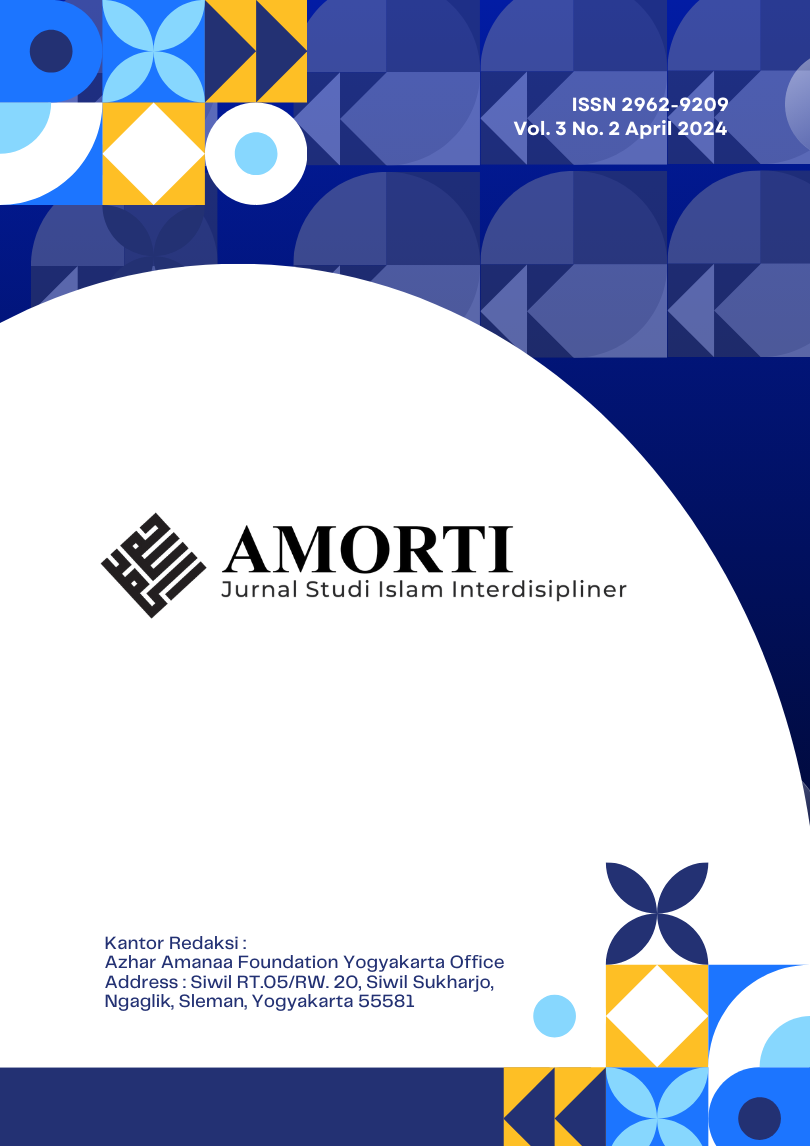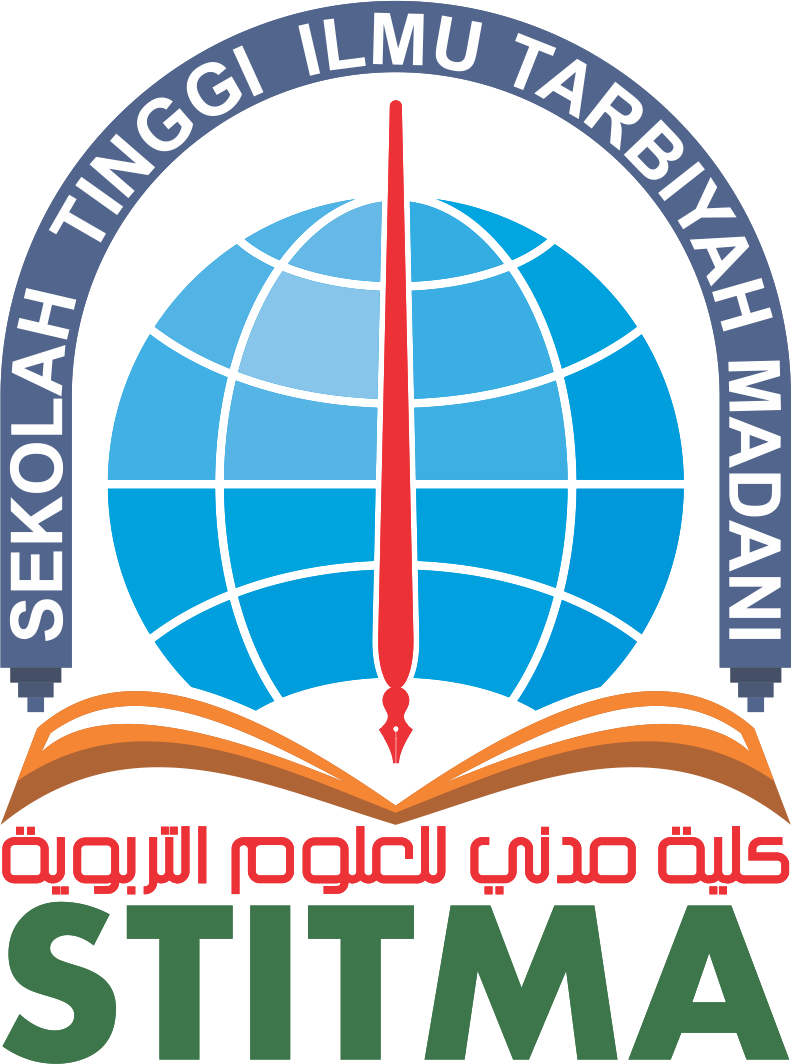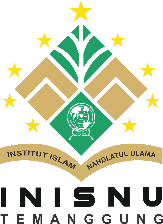Geography, space and education in the qur'anic story of moses: A hermeneutical perspective
DOI:
https://doi.org/10.59944/amorti.v4i4.481Keywords:
Sacred space, Moses, Geography, EducationAbstract
This study explores the role of spatiality in the Qur’anic narrative of Prophet Moses, examining six central locations, Egypt, the river, the palace, Midian, the sea, and Mount Ṭur as transformative stages in the prophetic journey. Drawing upon classical Qur’anic exegesis and Gadamerian hermeneutics, the research employs a textual-analytical approach to explore how each place functions not merely as a geographical site but as a locus of divine pedagogy and existential formation. The study addresses a gap in Qur’anic studies and educational philosophy by highlighting how spatial interpretation reveals the pedagogical dimensions of prophetic experience and the construction of spiritual identity. Through this lens, the paper contributes to developing a Qur’anic philosophy of sacred space and deepens understanding of divine education in the Qur’anic worldview.
References
Abdulghani, N. A., & Alrumayh, S. H. (2025). An Islamic legal perspective on contemporary health issues: Integrating traditional and modern approaches. Jurnal Ilmu Psikologi Dan Kesehatan (SIKONTAN), 3(4). http://dx.doi.org/10.47353/sikontan.v3i4.2785
Abdulghani, N., Alsayd, A., & Aboujanah, Y. (2024a). المعجزة والكرامة في سورة الكهف 60-82: دراسة تحليلية مقارنة من منظور ديني وفلسفي لقصة موسى والعبد الصالح [Miracle and karama in Surah Al-Kahf 60–82: A comparative analytical study from religious and philosophical perspectives]. International Journal of Education, Language, and Social Science, 2(2), 121–132. https://doi.org/10.62612/ijelass.v2i2.52
Abdulghani, N., Ayad, N., Albshkar, H., Alsayd, A., & Aboujanah, Y. (2024b). الإشارات العلمية في قصة أصحاب الكهف: دراسة لتفسير مفاتيح الغيب لفخر الدين الرازي: Scientific references in the story of the companions of the cave: A study of Fakhr Al-Din Al-Razi’s Tafsir Mafātīḥ Al-Ghayb. Adh Dhiya | Journal of the Quran and Tafseer, 2(1), 39–51. https://doi.org/10.53038/adhy.v2i1.207
Abdulghani, N., Masuwd, M., Alrumayh, S., Masoud, M., & Touré, Y. (2025). Maqasid al-Shariah as a Framework for Developing Critical Thinking in Islamic Higher Education. Journal of Islamic Studies and Social Science, 1(2), 47-63.
Afsar, A. (2004). A comparative study of Qur'anic and Biblical narrative in the light of modern literary critical approaches [Doctoral dissertation, The University of Manchester (United Kingdom)].
Aini, A. F., Zulfikar, E., & Masuwd, M. (2025). Debating the Historicity of the Qur’an: Between Revisionist-Skeptical and Dialogical-Academic Approaches. Canonia Religia, 3(1), 75–90. https://doi.org/10.30762/cr.v3i1.3165
Albshkar, H., Ayad, N., Alouzi, K., Masuwd, M., & Abdulghani, N. (2024). Ashab Al-Kahf in the writings of the Orientalist Johann Wolfgang von Goethe: A semantic study of the intertextuality with Surah Al-Kahf: أصحاب الكهف في كتابات المستشرق يوهان فولفغانغ فون غوته: دراسة دلالية لألفاظ التناص مع سورة الكهف. Al Karima: Jurnal Studi Ilmu Al Quran dan Tafsir, 8(2), 118–129. https://doi.org/10.58438/alkarima.v8i2.262
Aldawsari, M., Asgari, E., & Finlayson, M. A. (2021). Story fragment stitching: The case of the story of Moses. In 1st Workshop on Artificial Intelligence for Narratives (AI4N 2020).
Alhassen, L. A. O. (2011). Qur'ānic stories: God as narrator, revelation as stories [Doctoral dissertation, University of California, Los Angeles].
Almajri, S., Baroud, N., Alouzi, K. M., & Kasheem, A. (2025). Islamic psychology: An integrative approach to human behavior and mental well-being. Bulletin of Islamic Research, 3(4), 687–704. https://doi.org/10.69526/bir.v3i4.353
Almaroof, A. S., Rana, R., & Kadhim, K. A. (2015). The identity of Moses in Surah Al-Qasas with reference to time and space. Journal of Applied Linguistics and Applied Literature: Dynamics and Advances, 3(1), 11–29.
al-Razi, A. (2000). Mafatih al-ghayb = al-Tafsir al-Kabir (3rd ed.). Beirut: Dar Ihya’ al-Turath al-‘Arabi.
Alriteemi, A., Masuwd, M., Masoud, M., Alsayd, A., Aboujanah, Y., Alrumayh, S., & Ayad, N. (2025). The geography of place in the Qur’anic narrative: A hermeneutical study of the story of Moses and Al-Khidr through the lenses of philosophical symbolism and pedagogical perception. Tebuireng: Journal of Islamic Studies and Society, 6(1), 119–138. https://doi.org/10.33752/tjiss.v6i1.9813
Alsayd, A., Masoud, M., Abdullah, M., Alzletni, N., Maati, A., Barka, A., & Baroud, N. (2025). Postgraduate students’ usage patterns, perceptions, and attitudes toward artificial intelligence applications in learning: A case study of the University of Zawia, Libya. Journal of Education and Teacher Training Innovation, 3(1), 1–24. https://doi.org/10.61227/jetti.v3i1.149
Al-Sha‘rawi, M. M. (1997). Tafsir al-Sha‘rawi. Cairo: Akhbar Al-Youm.
Ayad, N., Masuwd, M. A., & Alrumayh, S. (2025). From riba to zakat: An analytical study of Islamic economic principles and their distinction from conventional economics. Bulletin of Islamic Research, 3(4), 733–752. https://doi.org/10.69526/bir.v3i4.358
Cholidi, M. F., & Masuwd, M. A. (2025). Evaluating tafsir maqāṣidī as a framework for ecological crisis moderation. ZAD Al-Mufassirin, 7(1), 54–74. https://doi.org/10.55759/zam.v7i1.261
Demirci, M., Aydın, G., Yıldız, M. S., & Cabir, M. (2023). The concept of space in the Holy Quran. Scientific Journal of Faculty of Theology, (34), 15–60. https://doi.org/10.52754/16947673_2023_34_2
Dzakiy, A. F., Mufid, A., & Masuwd, M. (2024). A reading of QS An-Nas verses 4–5 and the concept of original sin: An analysis of The Qur'an and the West by Kenneth Cragg. Al-Dzikra: Jurnal Studi Ilmu al-Qur'an dan al-Hadits, 18(1), 55–80. https://doi.org/10.24042/002024182134100
Eco, U. (1979). A theory of semiotics (Vol. 217). Indiana University Press.
Engkizar, E., Jaafar, A., Masuwd, M. A., Rahman, I., Datres, D., Taufan, M., Akmal, F., Dasrizal, D., Oktavia, G., Yusrial, Y., & Febriani, A. (2025). Challenges and steps in living Quran and Hadith research: An introduction. International Journal of Multidisciplinary Research of Higher Education (IJMURHICA), 8(3), 426–435. https://doi.org/10.24036/ijmurhica.v8i3.396
Faridasr, F., Hoseyni, S., & Barahimi, M. (2023). Narratological reading of Quranic stories: A case study of the story of Moses and Khidr. Religious Research, 11(21), 9–37.
Farouk-Alli, A. (2002). A Qur’anic perspective and analysis of the concept of sacred space in Islam. Journal for the Study of Religion, 15(1), 63–78. http://www.jstor.org/stable/24764344
Gözeler, E. (2007). The voice of God on Mount Sinai—Rabbinic commentaries on Exodus 20:1 in the light of Sufi and Zen-Buddhist texts. Ankara Üniversitesi İlahiyat Fakültesi Dergisi, 48(1), 193–196. https://doi.org/10.1501/Ilhfak_0000000938
Hasibuan, A., Nasution, I. F. A., & Masuwd, M. (2024). Tarekat in the digital age: Transforming spirituality for the age of technology. Religia, 27(1), 13–30. https://doi.org/10.28918/religia.v27i1.2306
Husayn, E., Alrumayh, S., Kasheem, M., Ibrahim, D., Alouzi, K., Shalghoum, N., & Almajri, S. (2025). The impact of artificial intelligence on knowledge management: Faculty perspectives from the University of Zawia’s Faculties of Economics, Management, and Law. Journal of Education and Teacher Training Innovation, 3(1), 52–66. https://doi.org/10.61227/jetti.v3i1.163
Husin, H., Abdul Aziz, A. bin, & Masuwd, M. (2025). Integrating Al-Ghazali’s educational philosophy: Advancing transformative learning in Islamic schools in the digital era. SYAMIL: Journal of Islamic Education, 13(1), 29–51. https://doi.org/10.21093/sy.v13i1.10263
Ibn Ashur, M. (1997). Al-Tahrir wa al-Tanwir. Tunis: Dar Sahnun li al-Nashr wa al-Tawzi.
Ichwan, M. N., Masuwd, M., Sya’roni, M., & Abdulghani, N. A. (2024b). Muhammad Abduh and Sufism: Building spiritual consciousness in the context of social change. Teosofi: Jurnal Tasawuf Dan Pemikiran Islam, 14(1), 163–187. https://doi.org/10.15642/teosofi.2024.14.1.163-187
Ichwan, M. N., Ulama’i, A. H. A., Masuwd, M. A., & Abdulghani, N. A. (2024a). Sufism and Quranic interpretation: Bridging spirituality, culture, and political discourse in Muslim societies. Ulumuna, 28(2), 655–680. https://doi.org/10.20414/ujis.v28i2.1082
Ikhwan, M. (2010). Western studies of the Quranic narrative: From the historical orientation into the literary analysis. Al-Jami’ah: Journal of Islamic Studies, 48(2), 387–411.
Ismail, S. (2024). Elements of narrative: Moses’ story in the Holy Qur’an as a case study. مجلة کلية الآداب جامعة الفيوم, 16(2), 68–99.
Kasheem, M., Alsayd, A., Aboujanah, Y., & Alzletni, N. S. (2025). Justice in the governance of nations and cultures through the story of Dhul-Qarnayn: A comparative analytical study from an Islamic philosophy perspective: العدل في إدارة الشعوب والثقافات من خلال قصة ذي القرنين: دراسة تحليلية مقارنة من منظور فلسفي إسلامي. Al Karima: Jurnal Studi Ilmu Al Quran dan Tafsir, 9(1), 1–17. https://doi.org/10.58438/alkarima.v9i1.311
Mahmudin, M., Nafi, M., & Masuwd, M. (2024). Sharia insurance controversy: Fatwa review and its development. Waralaba: Journal of Economics and Business, 1(3). https://doi.org/10.61590/waralaba.v1i3.217
Masuwd, M. (2025a). Philosophical Hermeneutics and the Study of Religion in Literature: Freedom, Faith, and Authority in Milton’s Paradise Lost. University of Zawia - Rewaq Alhkma Journal, 9(1). Retrieved from https://journals.zu.edu.ly/index.php/UZRHJ/article/view/1395
Masuwd, M. A. (2024). Islamic Pluralism and Küng’s Global Ethical Discourse: Toward a “Global-Maqāṣid” Centered Paradigm. Ittesaal–Journal of Connecting Discourses, 41-63. https://doi.org/10.64984/ijcd.1.2.2024.03
Masuwd, M. A. (2025b). Hadith, law, and Orientalism: A critical study of Joseph Schacht’s theoretical contributions. Ad-Dawl: Jurnal Islamic Studies, 1(1), 10–24.
Masuwd, M. A., Syamsuddin, S., & Setio, R. (2020). The oracle of Gog and Magog: A social-rhetorical interpretation of the prophetic discourse in Al-Kahf 83–101. Nun: Jurnal Studi Alquran dan Tafsir di Nusantara, 5(2), 1–25. https://doi.org/10.32495/nun.v5i2.89
Masuwd, M., Ayad, N., Albshkar, H., & Alsayd, A. (2025). Orientalism and Islam: A critical study of the relationship between Prophet Muhammad and the Jews as presented in chapter six of Montgomery Watt’s book Muhammad at Medina. Al-Risalah: Jurnal Studi Agama dan Pemikiran Islam, 16(1), 241–253. https://doi.org/10.34005/alrisalah.v16i1.4494
Mujibuddin, M., Masuwd, M. A., & Achfandhy, M. I. (2025). Reform of Islamic theology in India: Sheikh Waliullah Ad-Dahlawi and Syed Ahmad Khan. RUSYDIAH: Jurnal Pemikiran Islam, 5(2), 126–139. https://doi.org/10.35961/rsd.v5i2.1708
Nafi, M., Ulayya, M. S., Mahmudin, M., Bahamisy, M. H. M., & Alrumayh, S. H. (2024). Alternative fikih in sharia economics (An offer of takhayur fikih). Waralaba: Journal of Economics and Business, 1(3). https://doi.org/10.61590/waralaba.v1i3.218
Nasr, S. H. (2013). Islamic spirituality: Foundations. Routledge.
Neuwirth, A. (2014). Scripture, poetry, and the making of a community: Reading the Qurʾan as a literary text. Oxford University Press.
Pallawagau, B., Masuwd, M., Alsayd, A. D., Albshkar, H. A., & Alzletni, N. S. (2025). Nasruddin Umar's love curriculum and its relation to Arabic language teaching: Socio-linguistic and semantic studies / منهج الحب عند نصر الدين عمر وعلاقته بتعليم اللغة العربية: دراسات اجتماعية لغوية ودلالية. Ijaz Arabi Journal of Arabic Learning, 8(2). https://doi.org/10.18860/ijazarabi.v8i2.32264
Primarni, A., Masuwd, M., Makmudi, M., Fa’atin, S., & Nuhdi, A. (2025). The implementation of the theoretical humanism paradigm in holistic education. Journal of Research in Instructional, 5(1), 199–209. https://doi.org/10.30862/jri.v5i1.601
Pulungan, N. H., Adhli, A., Adnir, F., & Masuwd, M. A. (2025). THE HAGARISM THEORY OF MICHAEL COOK: THE QUR’AN AND HADITH IN THE PERSPECTIVE OF RELIGIOUS SYNCRETISM. Nabawi: Journal of Hadith Studies, 6(2), 273-304. https://doi.org/10.55987/njhs.v6i2.259
Raihani, R. S. A., Masuwd, M., Nursalma, N. A., Sartika, E., & Wahyudi. (2024). The study of Amtsal Al-Qur’an: Explanation of hypocritical verses in QS. Surah Al-Baqarah 17–18. Al-Fahmu: Jurnal Ilmu Al-Qur’an dan Tafsir, 3(2), 234–242. https://doi.org/10.58363/alfahmu.v3i2.221
Riyadi, S., Ridha, M., Masuwd, M. A., Abdulghani, N. A., & Suhendri. (2024). Integrating tradition and modernity in Islamic higher education: A phenomenological study of the boarding system. WARAQAT: Jurnal Ilmu-Ilmu Keislaman, 9(2), 78–91. https://doi.org/10.51590/waraqat.v9i2.884
Romdani, Y. R., & Rahmat, A. (2018). Comparative language style of Moses story in Al-Qur’an. Alsinatuna, 3(2), 181–205. https://doi.org/10.28918/alsinatuna.v3i2.1170
Sells, M. A. (Ed.). (1996). Early Islamic mysticism: Sufi, Qurʼan, Miraj, poetic and theological writings (Vol. 86). Paulist Press.
Shalghoum, N., Yahya, N., Abdullah, M., Masuwd, M., Kasheem, M., Alrumayh, S., Aryanti, Y., & Rosyadi, N. (2025). Integrating Maqasid al-Shariah into Higher Education: Enhancing the Role of Faculty in Achieving the SDGs. International Journal of Islamic Studies Higher Education, 4(2), 153–173. https://doi.org/10.24036/insight.v4i2.231
Syahran, M., Mardan, M., Khalid, M. R., Arsyad, A., & Masuwd, M. (2024). تفسير مفاتيح الغيب لفخر الدين الرازي في ضوء التفسير السيميائي (سورة الشرح أنموذجا): Tafsir Mafatih Al-Gaib Li Fakhr Al-Din Al-Razi Fi Dau Al-Tafsir Al-Simyai (Surah Al-Syarh Anmuzajan). Diwan: Jurnal Bahasa dan Sastra Arab, 10(1), 77–99. https://doi.org/10.24252/diwan.v10i1.47186
Syaripah, A., Zulaiha, E., & Taufiq, W. (2023). The personality of the Prophet Moses in the Al-Qur’an: Study of the verses of Moses in the Al-Qur’an review of personality psychology theory. Bulletin of Islamic Research, 1(4), 373–406.
Thabt, Z. (2022). Semiotic of places in Holy Qur’an. Moroccan Journal for Research in the Humanities and Social Sciences, 1(1), 101–121. https://doi.org/10.34874/PRSM.mjrhss-vol1.iss1.32687
Yahya, N., Abdullah, M., & Masuwd, M. (2025). Development of Digital Education in Libya: Progress, Challenges, and Future Directions. International Journal of Education and Digital Learning (IJEDL), 3(5), 211–219. https://doi.org/10.47353/ijedl.v3i5.307





























